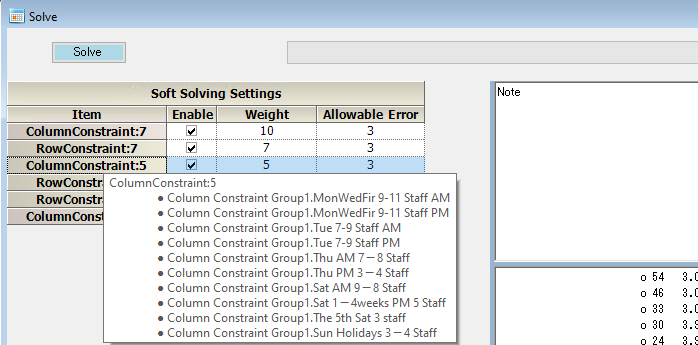What is the tradeoff?
To choose something is to throw something away.
It refers to a state of dichotomy in which one cannot be satisfied with both simultaneously.
When you are fiddling with a shift work schedule in a state of last-minute aggression, you may encounter this situation.
It is especially likely to appear when there are no human resources available.
When you have many resources, soft errors are unlikely to occur in the first place, so there is no need to make troublesome tradeoffs.
This work is only necessary when “we don’t have enough people here, but we want to do something about it “.
Recognizing Tradeoff Conditions
No one can predict in advance if there will be a tradeoff situation. We have to try anyway.
This is why we needed a fast solver. If people were to do it manually, it would be like being told to re-create the work schedule again. But a machine, if you change a few parameters at hand, will do it right away without complaint.
Find a good balance. In other words, find a compromise point
It would be best if you had a cut-and-try operation, changing the weights of the solving parameters. We’ll discuss this matter using youtube later.

We would say that we only need to adjust the weights for each of the following constraints and set the soft-constrained limits of the inequality constraints.
In other words, we only need to change the parameters on one page to make this work.
Do you put more emphasis on the organizational side? Do you put more weight on the staff side? Black placement with malicious intent is also possible.
I mentioned that the capabilities of an optimization solver are not comparable to a person. The ability to find combinations that humans cannot assign means, in a sense, that they can “make up for the lack of human resources. However, if the number of resources has not changed, then the burden is on the staff, possibly at the expense of the staff’s quality of life.
For example, if the row constraint is a hard constraint and the constraint on staff QOL is a soft constraint, then management may be happy to compensate for the staff shortage. You may not have to hire people while maintaining the current staff QOL.
Under the same resources, it is up to the weight of the constraints to decide whether to prioritize the management’s or the staff’s perspectives. Solvers just calculate the optimal solution with the parameter weights they are told,
There is no ethical complaint or resistance to it. It is solely up to the administrator to decide where to place the balance. In other words, malicious placement is possible.
I sincerely hope that the margin from the increased search capacity from people to the best solvers of our time will be allocated to improving staff quality of life.

